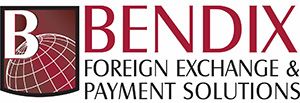- May 16, 2024
- Posted by: Anthony Aquino
- Category: Market News
The USD is showing mixed performance with slight firmness against major currencies as the market cautiously anticipates the upcoming US inflation data. Bonds are generally firmer, while commodities present a mixed picture: crude and iron ore are down, whereas copper is up. Major currency movements are minimal; the MXN and NZD are leading with gains under 0.2%, while the GBP and SEK are slightly lagging. The expected US PPI data predicts a 0.3% increase in headline prices and a 0.2% rise in core prices for the month. Headline PPI is projected to reach 2.2% for the April year, with core prices anticipated to dip to 2.3% from 2.4%. Given that swaps are delaying the full pricing of a 25bps Fed rate cut until November, an unexpected rise in PPI data is unlikely to significantly impact the USD. Conversely, weaker-than-expected data might push the USD down. Additionally, Fed Chair Powell is set to speak at 10 ET. Meanwhile, Japanese bond yields are climbing to multi-year highs following the BoJ’s reduction in debt purchases. Despite this, narrower term spreads are not boosting the JPY, which may concern Japanese officials. China is set to announce its 1Y MLF rate, expected to remain at 2.5%. Some minor policy easing is anticipated in the coming months to support economic growth, although the PBoC is likely waiting for clearer signals from the Fed’s policy timeline before making a move.
The USD/CAD currency pair is significantly influenced by economic data from both the United States and Canada. Key indicators such as employment figures, GDP growth rates, and central bank policies from the Federal Reserve and the Bank of Canada play crucial roles. The exchange rate is also impacted by global oil prices, given Canada’s status as a major oil exporter. When oil prices rise, the Canadian dollar tends to strengthen against the US dollar, and vice versa.Market sentiment and geopolitical events can further drive fluctuations in the USD/CAD pair. Traders often watch for economic reports and news releases to anticipate potential movements. Additionally, interest rate differentials between the two countries are a critical factor, with changes in rates potentially leading to shifts in investor preferences.
The EUR/USD pair is one of the most traded currency pairs globally and is influenced by economic conditions in both the Eurozone and the United States. Important economic indicators include inflation rates, GDP growth, and unemployment figures. Policies from the European Central Bank (ECB) and the Federal Reserve (Fed) also have a significant impact on the pair’s movements.
Additionally, political events, such as elections or referendums in Europe or the US, can cause volatility. The health of the global economy and investor risk appetite further influence the EUR/USD exchange rate. Changes in market sentiment, driven by geopolitical tensions or significant financial news, often lead to rapid shifts in the currency pair.

